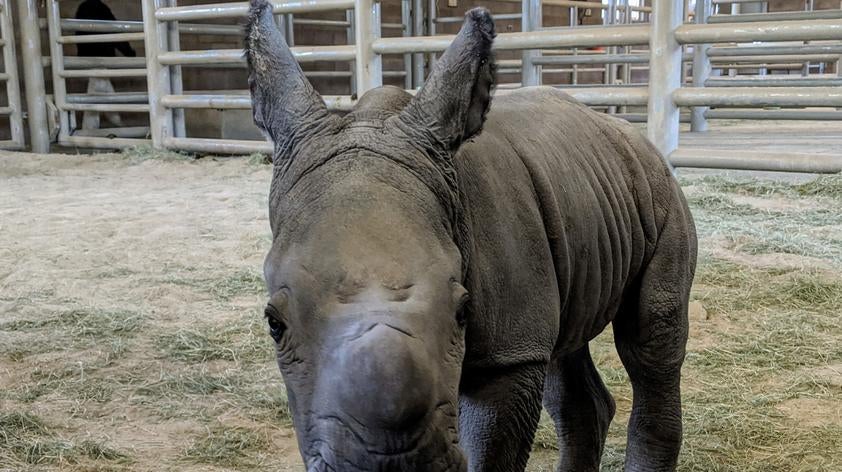
The scoop on rhino poop
Recently, there has been a lot of excitement at the Nikita Khan Rhino Rescue Center (RRC) at the San Diego Zoo Safari Park.
In July 2019, southern white rhino (SWR) Victoria had her calf, Edward, the first SWR born in North America via hormone induced artificial insemination. Then, in November 2019 Amani had her calf, named Future, another SWR calf born via artificial insemination. Future’s birth was especially exciting as she was the first rhino born using chilled semen for artificial insemination and she is the 100th southern white rhino born here at the Safari Park!
Despite all the excitement, keepers have continued diligently collecting fecal samples from the 7 female SWRs who call the RRC home.
In the past year alone, 1,000 fecal samples have been analyzed from the RRC rhinos! Rhino poop is a great analytical tool because it's a non-invasive collection method for the animals and it is easy for keepers to access.
Luckily for us, we can get lots of information from rhino poop.
Specifically, we look at the hormone progesterone in order to keep track of the females' reproductive cycles. Progesterone naturally rises and falls throughout the estrous cycle of a rhino but remains high approximately 3-4 months after pregnancy occurs. Progesterone then acts as the dominant reproductive hormone during pregnancy in order to maintain a growing calf.
Throughout both Victoria and Amani's pregnancies, the Reproductive Sciences team has been able to keep a close eye on these moms to be. By measuring and tracking progesterone levels in rhino fecal samples, we have an opportunity to ensure mom is maintaining the proper hormone levels and get some insight on when she is approaching calving.
Since Victoria was a few months ahead, we were able to use her pregnancy as a model for what to expect with Amani's hormone levels.
Victoria’s pregnancy lasted 493 days, while Amani’s pregnancy was a few days longer at 498 days. Both females showed very similar patterns through their pregnancies. Victoria and Amani both had a slow rise in progesterone 4 months post artificial insemination. Both maintained high levels of progesterone throughout their pregnancies until their slow decline approximately 2-3 months prior to giving birth.
After calving, their progesterone continued dropping all the way to baseline level, where they both currently remain. Since rhino calves can nurse for over 12 months and the typical birth interval is 2-3 years, we expect their progesterone levels will stay at baseline for an extended period of time.
We are fortunate to be able to have valuable insight on these animals through something so easily taken for granted. Our fecal hormone monitoring will continue in the hopes of following several more rhino pregnancies in the future. Thank goodness for rhino poop!













